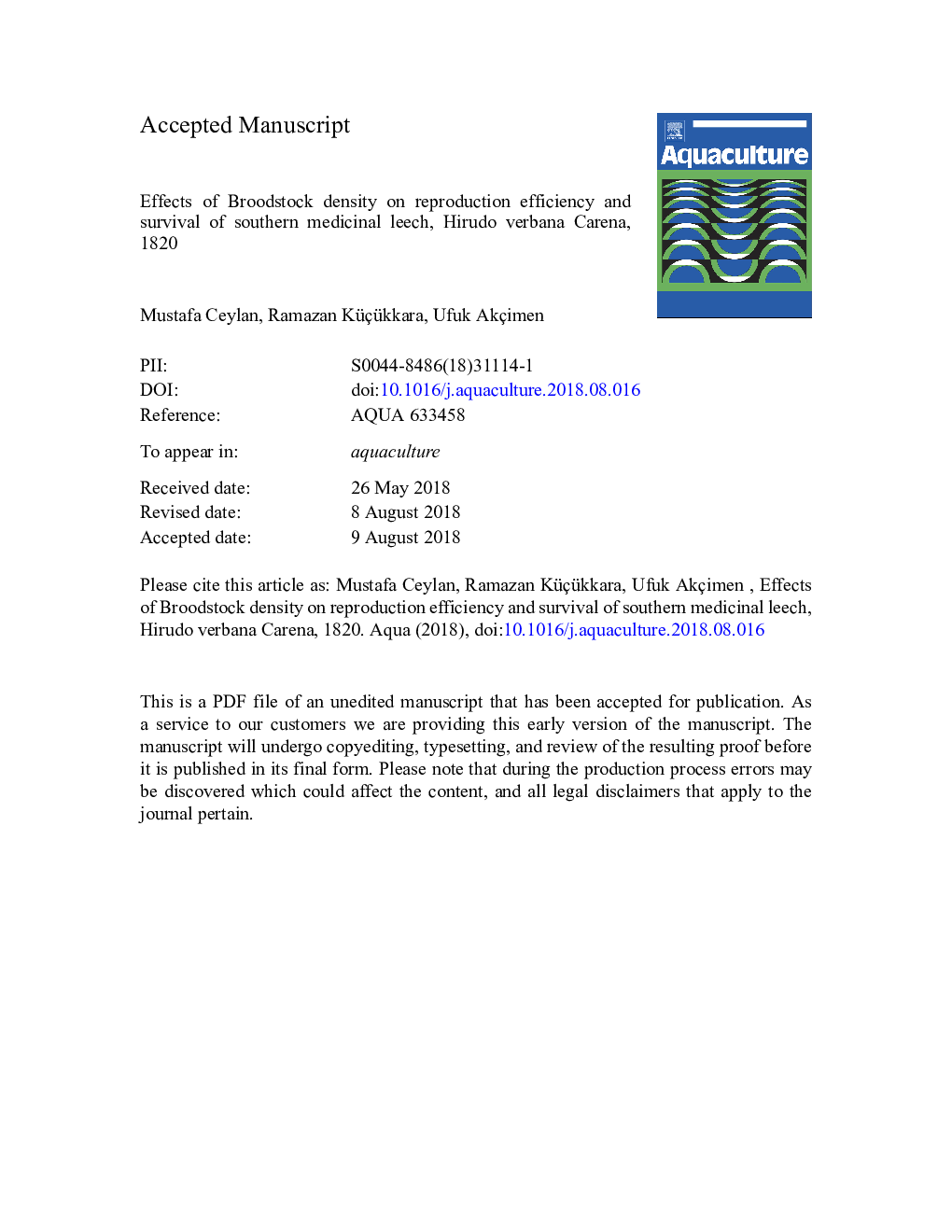| Article ID | Journal | Published Year | Pages | File Type |
|---|---|---|---|---|
| 10137358 | Aquaculture | 2019 | 28 Pages |
Abstract
The purpose of this study was to investigate the effects of broodstock density on reproduction efficiency and survival of southern medicinal leech, Hirudo verbana which is neglected in aquaculture studies. 93 gravid leeches with a weight of 5.94â¯Â±â¯1.06â¯g were placed in 2â¯L pet jars having moist peat in 5 different densities (1, 2, 4, 8 and 16 leeches Lâ1). The highest reproductive performance was obtained with 3.83â¯Â±â¯0.29 and 3.67â¯Â±â¯0.58 cocoons/broodstock, and 50.04â¯Â±â¯5.63 and 45.21â¯Â±â¯10.76 offspring/broodstock in 2 and 1 leeches Lâ1 stocking density, respectively. These groups were followed by groups of 4, 8 and 16 leeches Lâ1 stocking density with 2.33â¯Â±â¯0.76, 1.79â¯Â±â¯0.19 and 0.44â¯Â±â¯0.33 cocoons/broodstock, and 34.79â¯Â±â¯10.00, 23.74â¯Â±â¯7.31 and 4.47â¯Â±â¯4.37 offspring/broodstock, respectively. There were deaths as a result of cannibalism in groups of 8 and 16 leeches Lâ1, which were the densest groups. As broodstock density increased, deformities occurred in the cocoons, causing desiccation in incubation period, embryo deaths and decrease in the number of offspring. This study revealed that high broodstock density causes a significant reduction in the reproduction efficiency and cannibalism-induced mortality in production of H. verbana. In line with the findings obtained, 2 leeches Lâ1 broodstock density is recommended for efficient southern medicinal leech, H. verbana production, which prioritizes leech welfare in aquaculture.
Related Topics
Life Sciences
Agricultural and Biological Sciences
Aquatic Science
Authors
Mustafa Ceylan, Ramazan Küçükkara, Ufuk Akçimen,
